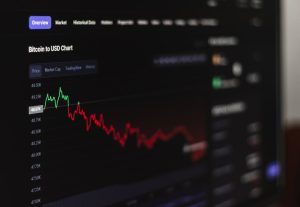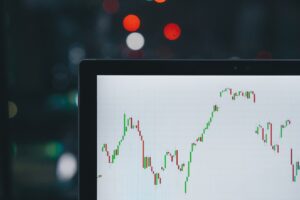Understanding Pips in Forex Trading: A Beginner’s Guide
If you have just started your journey into the world of forex trading, you might have come across the term “pips” quite often. Pips are an essential concept in forex trading and understanding them is crucial for any beginner looking to trade in the forex market. In this beginner’s guide, we will delve deeper into what pips are, how they are calculated, and why they are important in forex trading.
What are Pips?
In the forex market, a pip is a unit of measurement to represent the smallest price movement of a currency pair. It stands for “percentage in point” or “price interest point.” Most currency pairs are quoted with four decimal places, except for the Japanese yen pairs, which are quoted with two decimal places. A pip is the fourth decimal place for most currency pairs and the second decimal place for yen pairs.
For example, if the EUR/USD currency pair moves from 1.2500 to 1.2501, it means that the pair has moved one pip. Similarly, if the USD/JPY currency pair moves from 110.50 to 110.51, it means that the pair has moved one pip.
Calculating Pip Value
The value of a pip varies depending on the currency pair being traded and the size of the trade. To calculate the pip value, you need to know the exchange rate of the currency pair and the position size (volume) of your trade.
The formula to calculate the pip value is as follows:
Pip Value = (0.0001 / Exchange Rate) * Trade Size
Let’s take an example to understand this better. Suppose you are trading the EUR/USD currency pair, and the exchange rate is 1.2500. If you enter a trade with a volume of 10,000 units (which is equivalent to 0.1 lots), the pip value would be:
Pip Value = (0.0001 / 1.2500) * 10,000 = $0.80
This means that for every pip the EUR/USD moves, your profit or loss would be $0.80.
Importance of Pips in Forex Trading
Understanding pips is essential in forex trading for several reasons:
1. Tracking Profit and Loss: Pips help you track your profit and loss in forex trading. As mentioned earlier, the value of a pip determines how much money you make or lose for each movement in the exchange rate. By calculating the number of pips gained or lost in a trade, you can determine your overall profit or loss.
2. Risk Management: Pips are crucial for managing your risk in forex trading. By setting stop-loss orders and take-profit orders based on the number of pips, you can control your potential losses and lock in your profits. For example, if you set a stop-loss order at 50 pips, you limit your potential loss to 50 pips.
3. Position Sizing: Pips play a significant role in determining the position size in forex trading. Position sizing refers to the amount of currency you buy or sell in a trade. By considering the number of pips, you can calculate the appropriate position size based on your risk tolerance and account balance.
4. Spread and Slippage: Pips also come into play when considering the spread and slippage in forex trading. The spread is the difference between the bid and ask price, and it is usually measured in pips. Slippage refers to the difference between the expected price of a trade and the actual executed price. Both spread and slippage can have an impact on your overall profitability, and understanding pips helps you assess these factors.
Conclusion
Pips are the building blocks of forex trading and understanding them is crucial for any beginner looking to navigate the forex market. By knowing how to calculate pip value and understanding the importance of pips in tracking profit and loss, managing risk, determining position sizing, and assessing spread and slippage, you can make more informed trading decisions. So, take the time to master the concept of pips, and it will undoubtedly enhance your forex trading journey.






